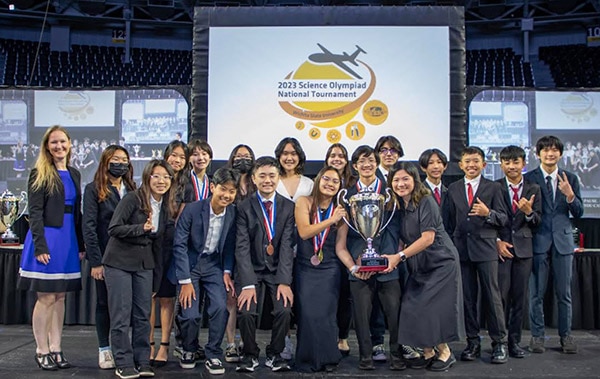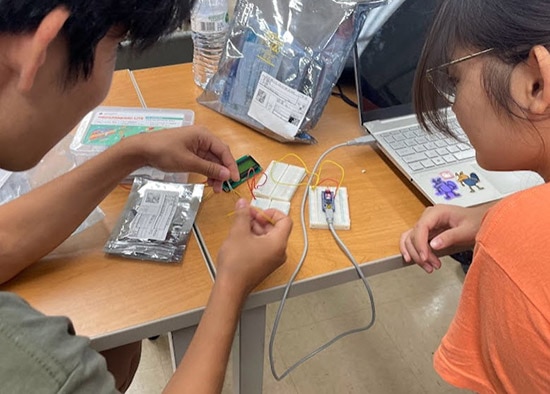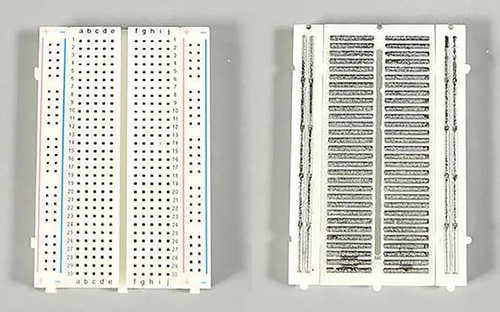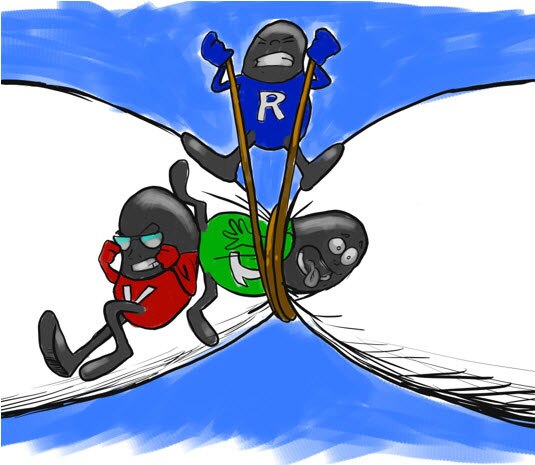Robotics Education: The Basics
2023-12-05 | By Antonio Velasco
What is the Science Olympiad?
In Middle School and High School, something that I had the opportunity to participate in was the Science Olympiad, a STEM competition involving events from numerous areas of science like anatomy, ornithology, electronics, and so much more. I've done it from 7th grade all the way to 12th, doing hundreds of tests and attending a ton of competitions--even traveling for some! My personal favorites came from forensics sciences and meteorology events.
Today, I find myself volunteering to help put on tournaments and, whenever I'm home, coaching the team that I once competed for!

Here they are at last year's national tournament, placing 12th out of 60 teams and bringing home a trophy to Hawaii for the first time ever! This was our middle school team, Highlands Intermediate School.
A great deal of them have now moved up to high school and now compete with our sister team in the 9th-12th grade division at Pearl City High School. I've long coached the events that I love (forensics and meteorology), but this year, there are two events that fall in line with electrical engineering where I could help tremendously. Especially given the fact that since they've never worked with circuits, much less embedded systems before, this provided the perfect opportunity for me to get involved.
The Events and Tasks
The two events are:
Detector Building, where teams this year are tasked with creating an ORP or Redox Probe, which will essentially measure the voltage and concentration of salt in ppm of a water sample solution. The kicker here is that it will need to display the numbers on a digital display, and they can't use anything premade--they'll have to wire it all up, code the microcontroller, and even make their own probe all by themselves.
Robot Tour, where teams this year are tasked with building and programming a robotic vehicle (typically a rover-type) to navigate a pre-built track with obstacles and bonus zones to not only finish the course but also complete it as fast as possible. This project will require motor control, physical sensors, and a lot of coding and calibration.
These tasks start off relatively simple for the initial build, but calibration and improvements will take a while--especially when you're striving to be the best in the state and in the nation! I'll be blogging about the two projects separately as we get them done.
Furthermore, to get to the point where we're even building these things, we needed to get the students up to speed with the basics.
The Basics - Building a Strong Electronics Base!
The first thing to do, even before touching any components was to get them introduced to basic electronics and electricity principles. This meant going over Ohm's law, talking about what current, voltage, and resistance are, and even just how basic circuits work. Fortunately, the students were fast learners in this aspect, and we got to playing around with the breadboard very quickly.

The very first thing I did when getting them to the components was to take apart a breadboard to show them how it worked, with the power rails being on the sides and moving power vertically, and the middle portion being the part where we can connect pins and having everything connected horizontally. This breadboard's metal was exposed by removing its bottom sticker, making it easy to talk about and display:

I then had them make very basic circuits, like turning on an LED with the breadboard and making a blinking light with a 555 timer. Simple stuff to get them knowledgeable about how circuits worked. We even burnt out an LED (on purpose!) to display the importance of resistors in circuits.
The final thing that we did on the first day was to start a crash course on coding. I explained what an Arduino is, how it works, and the types of pins (Analog vs. Digital, along with the power pins, etc.). One of the most important things to touch on was how Arduinos take input and produce output, thus allowing us to use sensors and control certain components. This was huge as it would give us the opportunity to build our Redox Probe (conductivity sensor) and our robot! I also went over basic C++ and how to utilize the Arduino IDE. I'll need to go more in-depth later with them on how to use libraries and whatnot, but I feel like covering all the syntax and variables in one session might be more than enough for them to digest.
So, with that, that was Day 1 of a few for teaching embedded systems to Pearl City High School Sophomores! We covered a lot of ground, and the students are super excited to keep going. In the coming days, we'll build our first prototypes and eventually break ground on producing a competition device. I'm only home for a couple more weeks, so hopefully I'll be able to push hard enough to get them going!
Have questions or comments? Continue the conversation on TechForum, DigiKey's online community and technical resource.










